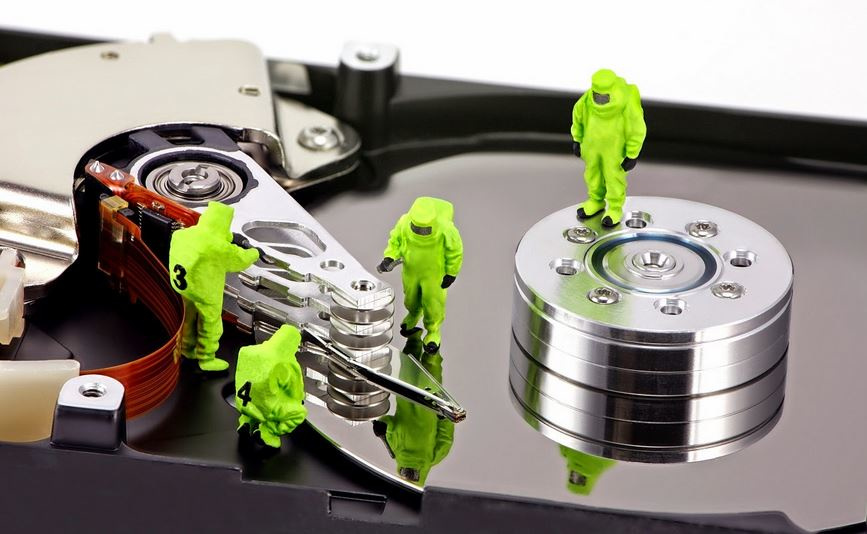What Is Data Recovery and How Does It Work
Data recovery is the process of salvaging or retrieving a lost, inaccessible, damaged, corrupted, or formatted data from secondary storage, portable media or files, when stored in them cannot be read or accessed in a normal way. SD card video recovery situations differ. In some cases, the lost data may be retrieved from the disk, including the original format and name. But in other cases, the data may be retrieved but the name and the format it was before are lost. And in some terrible case, no file can be recovered.
To understand this phenomenon, first, we need to understand how the file is stored in the on the disk and ways in which they can be recovered. Knowing the basics can help you gage the chances of your lost files being recovered.

Many operating systems in modern days partition the physical hard disk into a single or several parts (“Partitions”). In Window based operation systems, these partitions are also referred to as “logical disks.” These partitions are assigned letters or drive letters and a descriptive label, though this is optional. The partitions have a unique file system type which is completely independent of other partitions.
The meta-data of the hard drive is the information about the structure of the partition and hard drive service. It is the information about the files stored on the disk and not the data itself. Each partition is divided into two sections, the first section stores information about the disk and the second section stores data that includes those files. This division makes it easier to manage disk and retrieve files faster.
How file Recovery Works
The first method a data recovery software will try to do is analyze the information about files and folders. The reason for this is that the recovery software can successfully salvage files as they were before, that is, everything including original names, date/time stamps, and paths.
The data recovery process begins with the software trying to read and analyze the original copy of the information on files and folders. In most cases, if the files were deleted by accident, this step is usually enough to recover all the data.
If the initial copy with the information about the files and folders is damaged badly, the data recovery software will look for the second copy by scanning the disk. As it goes through this process, it also checks for more information about the files and folders on the data section of the disk. With this information, it reconstructs the original data in their entirety. If the system file on the disk is not badly damaged, it is usually very possible to recover all the file and structure of the folder.
In the event that the file system is severely damaged, then this method of recovery cannot reconstruct the file and structure of the folder in its original state. Instead, it will save the recovered files in the “orphaned” folders.
The second method of file recovery is by using what is called the search for unknown file types or also known as raw file recovery. This method is resorted to if the first one has failed to yield satisfactory results. This recovery process has a high chance of greater success than the first method. The only negative thing is that it cannot reconstruct the initial file names or date/time stamps. It may also fail to reconstruct the entire file structure and folder of the disk.
This method work by first analyzing the contents of the hard drive for ‘file signatures’. File signatures are what signify either the beginning or the end of any file. Virtually all kind of files has at least one signature. You may have noticed “%PNG” on portable network graphics file format or “ID3” string on MP3 files. Those are what are called file signature. With that information, recovery software can know what kind of file a data belongs and therefore recovers it.
After a raw file search is done, your data recovery software will show the probably recoverable files under the “Extra Found Files.” They will then be assigned extensions as per their identified signatures. They will also be given placeholder names.
Even though this method is known for its best results, it has some limitations. The first disadvantage is that in some cases a file will have both the ‘beginning’ and ‘end’ file signature, while some will have only ‘beginning’ signature and no ‘end’. Other file types will have completely no recognizable signature. This method works best if the recovery software can identify both ‘beginning’ and ‘end’ file signature. However, if the file has only the ‘beginning’ and no the ‘end’ the software can assume that the file ends at the start of the next file, therefore retrieves it. But for files with on identified file signatures, this method won’t be able to tell the data from the portions of the unallocated disk.
Despite the fact many recovery software uses one of the above-discussed methods, there are some additional search criteria and recovery techniques that can still be used to achieve better results. A more advanced software like R-Studio and R-Undelete can use both methods at once. They can analyze the damaged data and then search for the known types of files during the single scan process of the disk.
It is easy to estimate the outcomes of the data recovery using the information above. However, it is important to know that the extent of the damage on your files depends on what caused it in the first place. Additionally, you should not try to perform data recovery on disks that have hardware failures, instead, consult with the data recovery expert with more experience on the matter. Remember any attempt will lead to further loss of your data.
The sure way of estimating the chance for your data recovery is trying the free programs like SD card video recovery. They usually come with support documentation to make you do it yourself data recovery process easy.


 Umar
Umar







If you have the following PC issues, I have the solution: Your computer is running slower than usual Does it take forever to run or load programs Your computer freezes up or crashes at random You are plagued by the Blue Screen of Death Computer errors frequently pop up and hassle you Your system takes forever to boot up or shut down You don't need technical expertise to use this software. Try it for a free diagnosis so you can pinpoint exactly how to boost system performance. registry-clean-up.net
Download ZOOK Data Recovery Software for Windows to recover permanently deleted data items in few moments. The tool enables user to recover unlimited data from formatted hard disk, hard drive, pen drive, SD Card, external storage tool, etc. The tool has so simple and intuitive interface which provides a direct option to recover lost data from any external storage devices. Users just need to choose desired option and perform data recovery to scan deleted items. It has also provides an Advance Search option to search specific deleted files. To test the utility, users have choice to choose FREE Trial, which allows you to preview all deleted files. Explore More:- https://www.zooksoftware.com/data-recovery-software/